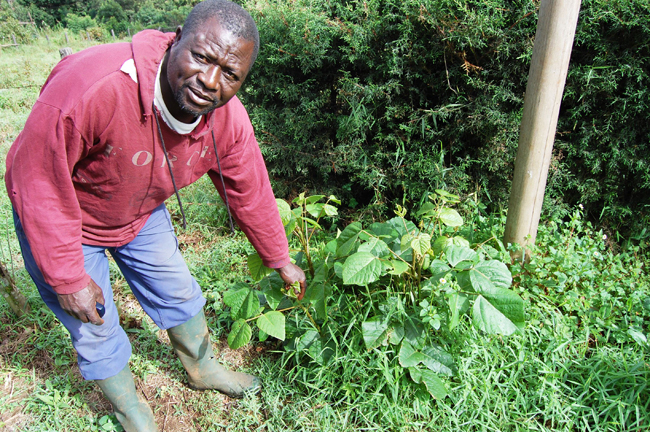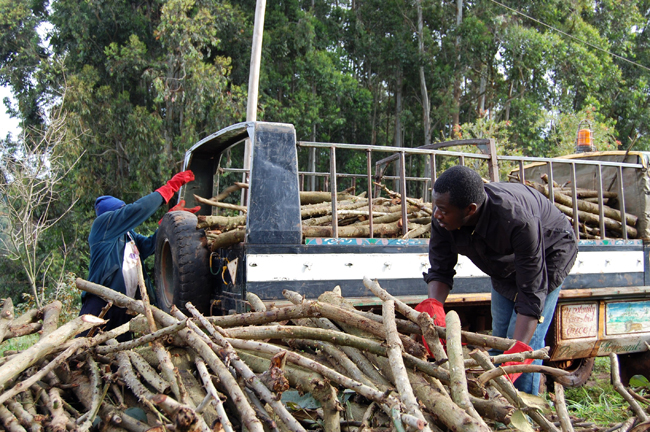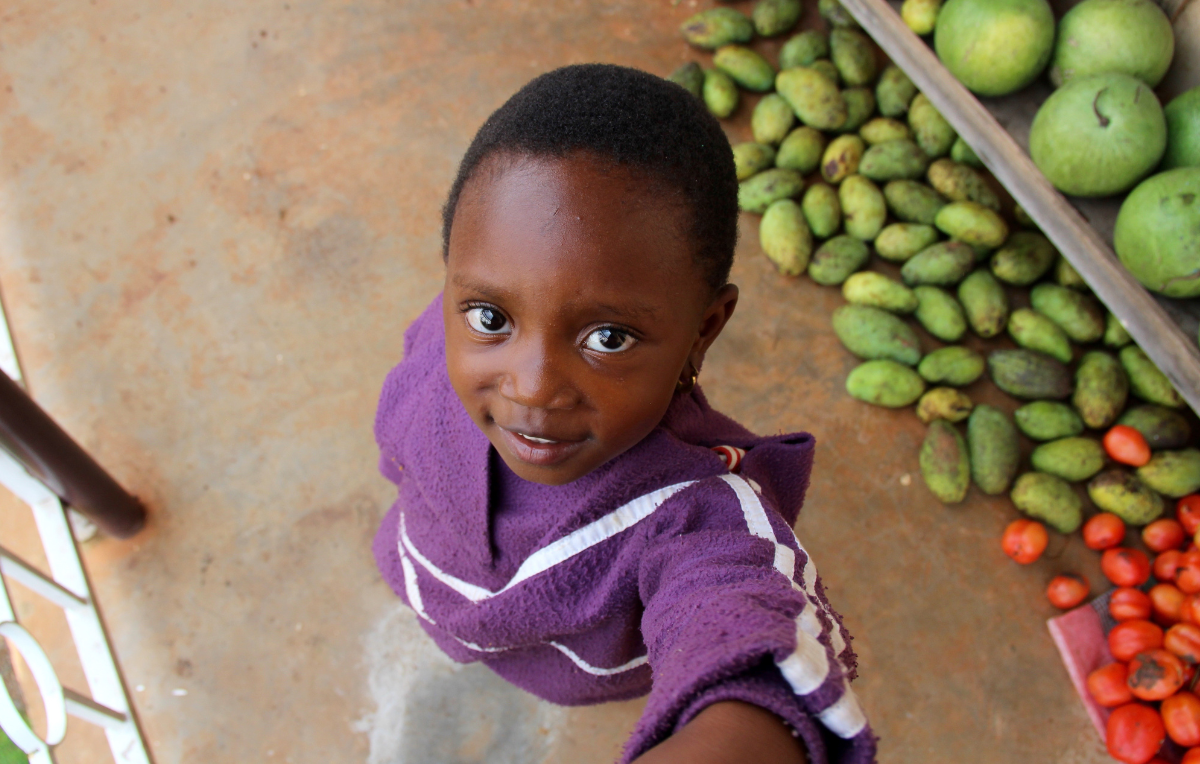On Wednesday we drove to Wvem Village to collect Erythrina tree cuttings from the Sharon Farmers Group. Erythrinas are squat thorny trees with wide leaves. These trees will be used to grow a live fence around the perimeter of our Himalayan Institute Cameroon (HIC) Energy Farming campus.
Boniface Litika of the Sharon Farmers Group offered to donate the cuttings on one condition: that we climb to the top of a mountain, where their headquarters, the Rural Transformation Center (RTC) sits, to get them.
The RTC in many ways shares a common bond with HIC’s School of Energy Farming. Both are budding organizations that seek to revitalize rural Africa through education and demonstration. Both promote the growing of medicinal crops like Artemisia annua, the World Health Organization’s choice for most effective malaria treatment.
Mr. Litika founded the Rural Transformation Center to prove that there are opportunities for sustainable self-employment close to home. “The youths are leaving for Bamenda, for Douala, because they think there is nothing for them on the farms,” he said. The RTC is proof that—with the help of a few modern techniques—gardening, livestock-rearing, and beekeeping can be profitable on any scale.
HIC’s Energy Farming team spent the morning loading Erythrina stock into a six-wheel-drive cargo truck. We needed all six wheels to reach the center.
The Sharon Farmers Group also hopes to bridge one of the most prevalent and longstanding social divides in Africa: that between agriculturalists (farmers) and pastoralists (herders). During the 19th century, traditional interactions between the two groups turned increasingly hostile as European powers seized land for large-scale plantations. Colonial governments often exacerbated the problem by assigning them separate racial and political identities.
Litika stresses the need for local cooperation. He also encourages the members of the Sharon Farmers Group to take up combination farming and animal-rearing. On a tour of the grounds he said, “You see these sheep? We are never needing to buy manure or pay for the transportation, and when the dry season comes, our Erythrina fence has leaves that will feed them. Too much money is spent on the chemical fertilizers and the fodder.”
Before we left I asked Litika about future cooperation between the Sharon Farmers Group and Himalayan Institute Cameroon. He thanked us for the Institute’s previous assistance and promised, “We will continue to work hand in glove with the Himalayan Institute to arrive at our objectives.”
There’s a lesson to be learned from the RTC approach to Erythrina fencing. Rather than being planted vertically in the soil, the one-meter cuttings are notched on opposite sides with a machete and then buried horizontally. From the notches, stem and roots emerge. The main stock anchors the roots, which intertwine and reinforce the hold on the soil. In their most vulnerable stage, the young trees are supported by each other while they grow.

Boniface Litika points out a baby Erythrina tree.






